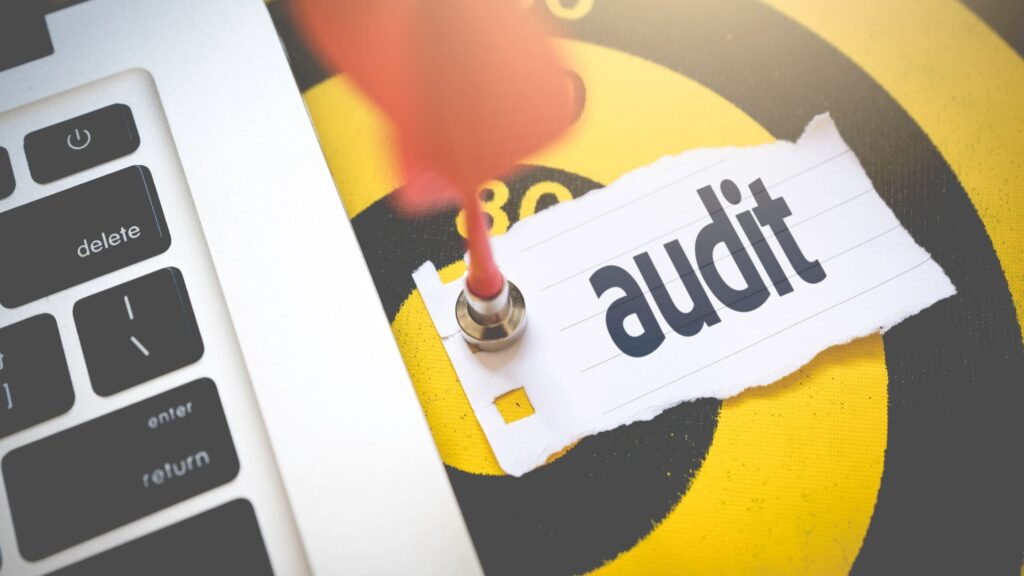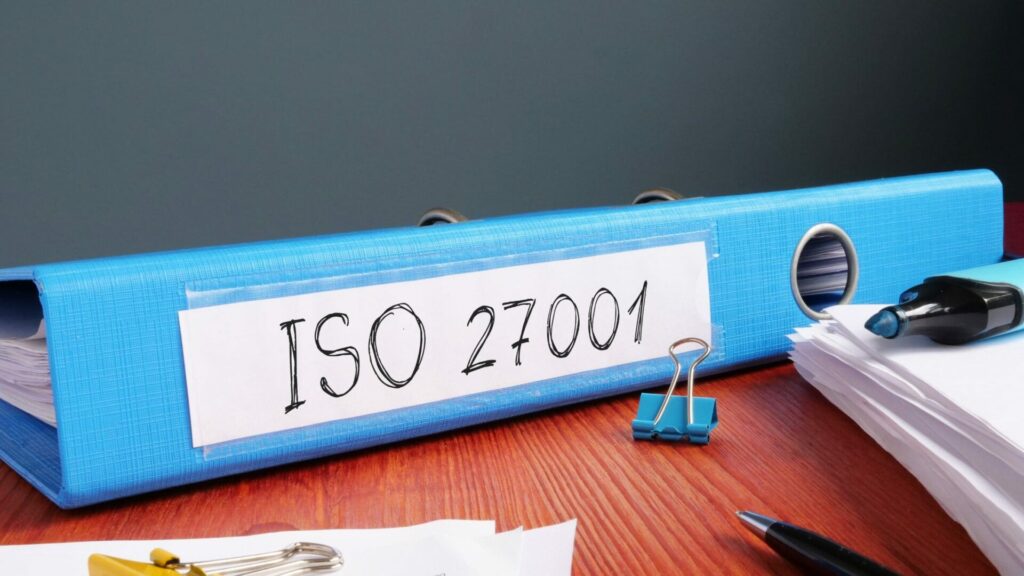When your business relies on third-party suppliers, quality audits are essential. Trust alone isn’t enough in business—you need to be certain that the products you receive meet strict quality standards.
Whether you’re a manufacturer ensuring your production processes are running smoothly or a company sourcing goods from external factories, regular quality audits help you avoid costly mistakes and ensure compliance with industry standards. These audits aren’t just a formality; they offer reasonable assurance that products and services meet both customer expectations and regulatory requirements.
Now, let’s dive into why quality audits are a critical necessity for any business.
What is a Quality Audit?
A quality audit is a systematic review of a company’s policies, procedures, and processes to determine whether they meet the defined quality management system (QMS) requirements. It evaluates product quality, production processes, and quality controls to ensure that the manufacturer adheres to established quality standards. This audit serves as a verification process, confirming that operations are aligned with customer requirements and legal compliance.
Why is a Quality Audit Essential for Businesses?
A quality audit plays an integral role in ensuring that both manufacturers and the businesses that rely on them consistently deliver high-quality products.
By conducting these audits, organizations can ensure their products meet predefined quality standards and align with customer requirements.
Whether you’re a manufacturer or a business that contracts manufacturing services, a quality audit offers reasonable assurance that your processes are effective, and your quality management system is functioning as intended.
For businesses that outsource their production, these audits are essential to verify that the manufacturer follows the established policies and procedures to deliver reliable products. By thoroughly evaluating the quality controls, businesses can prevent defective products from reaching the end-users, which reduces the risks of non-conformities and enhances customer satisfaction.
How Do Quality Audits Work?
quality audits work by systematically reviewing a company’s policies, procedures, and practices to ensure they meet established quality standards. These audits typically follow a structured process that includes several key steps.
First, there is a pre-audit phase where planning and scheduling take place.
Then, auditors collect data through methods such as documentation reviews, interviews, and physical inspections. The final stages involve reporting the findings, which helps businesses take corrective actions if necessary.
What are the The Standard Phases of a Quality Audit?
The quality audit process generally consists of the following phases:
- Planning and Preparation: This phase involves identifying the scope and objectives of the audit. The audit plan is developed, specifying what areas and processes will be evaluated.
- Data Collection: Auditors gather information by reviewing documentation, conducting interviews with personnel, and inspecting the relevant systems or processes. This helps in assessing whether the company adheres to the specified quality management procedures.
- Evaluation and Analysis: The collected data is analyzed to determine whether the quality controls in place meet the required standards and objectives.
- Reporting Findings: Once the evaluation is complete, the auditors prepare a report detailing their findings. This report outlines any non-conformities or areas of concern and may suggest corrective actions.
Follow-Up Actions: Based on the audit results, the organization may implement corrective measures to address any identified issues. Follow-up audits may be scheduled to ensure these actions are effectively carried out.
What Are the Different Types of Quality Audits?
Quality audits come in various types, each serving a specific purpose to ensure that a company’s processes, products, and systems meet defined quality standards. These audits are essential for evaluating compliance with policies, identifying areas of improvement, and ensuring that products are produced consistently according to set requirements. Depending on the nature of the audit, it may focus on internal processes, external factors, or supplier operations.
Internal Audits
Internal audits are conducted by an organization’s own personnel to evaluate whether the company’s internal processes are in line with its quality management system. These audits help businesses assess the effectiveness of their quality controls and identify any areas that may need improvement. By reviewing their own processes, companies can maintain compliance with industry standards, improve operational efficiency, and ensure that they are meeting their own quality goals.
Internal audits are critical for maintaining consistency in business processes and preparing for external audits. They also play a significant role in continuous improvement, as they help identify non-conformities and offer a roadmap for corrective actions.
External Audits
External audits are performed by independent parties, typically to verify that a company’s products, services, and processes meet external quality requirements. These audits are crucial for businesses that need to demonstrate compliance with industry regulations, customer requirements, or certification standards. External auditors, who are independent from the organization, provide an unbiased assessment of how well the company adheres to established quality controls.
External audits are often required for certification purposes, such as ISO standards or regulatory compliance. The findings from these audits provide the company with valuable feedback on its compliance and performance, highlighting areas where improvements may be needed.
Second-Party Audits
Second-party audits are performed by a customer or client on their suppliers. These audits are part of the supplier evaluation process, ensuring that the products or services being provided meet the customer’s quality standards and contractual requirements. In this case, the customer acts as the auditor, focusing on the supplier’s ability to meet agreed-upon specifications.
The primary goal of second-party audits is to build trust between the supplier and the client by verifying the quality controls in place.
Third-Party Audits
Third-party audits are conducted by a completely independent auditor who is neither affiliated with the supplier nor the customer. These audits are often required for certification purposes, such as ISO or other industry-specific standards. The third-party auditor assesses the company’s adherence to quality management systems and evaluates whether the organization meets the necessary regulatory standards.
Third-party audits are critical for businesses seeking official certification or accreditation. These audits carry significant weight as they are conducted without bias, ensuring that the audit findings are impartial. The results of these audits can either validate the company’s compliance or indicate areas where corrective actions are needed to meet the required standards.
Supplier Audits
Supplier audits are evaluations conducted on a company’s external suppliers to ensure that they are following the agreed-upon quality standards and procedures. These audits help businesses maintain control over their supply chain by confirming that suppliers meet the required specifications for materials, products, or services. The goal is to verify the supplier’s capability to deliver consistent quality, reliability, and compliance with contractual obligations.
Supplier audits are critical for minimizing risks associated with the supply chain, such as delays, defective products, or substandard materials. By regularly auditing suppliers, companies can establish stronger relationships, ensure compliance with quality requirements, and reduce the likelihood of receiving non-conforming products.
Process Audits
A process audit focuses on evaluating the efficiency and effectiveness of the processes used within a company’s operations. This type of audit examines whether specific procedures are being followed according to the established guidelines and whether those procedures are capable of delivering the desired outcomes.
The goal is to ensure that the processes themselves contribute to the overall quality of the end product.
Process audits are crucial for identifying areas where inefficiencies or inconsistencies may exist within the system. By auditing processes, a company can implement continuous improvements, reducing variability and preventing issues before they impact the final product.
Product Audits
Product audits are focused on evaluating the quality of the final products themselves. The goal is to determine whether the products meet the established standards, customer requirements, and regulatory guidelines. This type of audit involves inspecting the finished product for defects, non-conformities, or deviations from the required specifications.
Product audits are essential for ensuring that only high-quality products reach the customer. By regularly conducting these audits, businesses can identify issues with product quality before distribution, ensuring customer satisfaction and compliance with industry standards.
System Audits
A system audit focuses on assessing the effectiveness of a company’s quality management system. This type of audit examines whether the organization is adhering to its documented policies and procedures and complying with the broader requirements of a quality management system, such as ISO standards. System audits aim to verify that all business processes are aligned with the organization’s quality goals, ensuring consistency and continuous improvement.
The importance of system audits lies in their ability to provide reasonable assurance that the overall management system is functioning correctly. By identifying areas of non-conformance, system audits help businesses correct issues before they affect product quality or customer satisfaction.
What Are Common Methods and Techniques Used in Quality Audits?
Some of the most commonly used techniques in quality audits are observation, documentation review, interviews, and product sampling.
- Observation involves auditors watching real-time processes to verify that employees are following proper procedures. This helps auditors identify inefficiencies or deviations from the company’s policies.
- Documentation: Well-maintained records allow auditors to verify that the organization adheres to its policies and procedures. These records serve as proof that the quality management system (QMS) is functioning as expected, offering reasonable assurance that processes align with set quality standards. Missing or incomplete records can lead to failed audits, as they prevent the auditor from confirming compliance with regulations and customer requirements. A thorough documentation review is a key step in any audit process. It helps identify any systemic issues, such as gaps in quality controls, inconsistencies in procedures, or areas of non-conformance. This phase not only confirms whether the organization meets quality standards but also uncovers potential risks within the business processes, allowing for early corrective actions.
- Interviews are conducted with personnel involved in specific operations. Auditors gather insights into how employees implement procedures and handle their responsibilities, which can reveal areas that need improvement.
- Product sampling is used to check if the final output meets required specifications. By assessing a sample of the products, auditors can identify any defects or quality issues before the products reach the market.
Who Conducts Quality Audits and What Are Their Roles?
Quality audits are typically conducted by trained professionals called auditors. These auditors play a crucial role in evaluating whether a company’s operations comply with regulatory standards and internal policies.
Auditors must possess a strong understanding of quality management systems, industry standards, and the specific processes of the business they are auditing. They are also expected to have strong analytical and observational skills to effectively identify any discrepancies in processes.
Common tasks and responsibilities of auditors include:
- Planning the audit and defining its scope.
- Reviewing documentation, such as records, policies, and procedures.
- Conducting on-site inspections and observations of operational processes.
- Interviewing personnel to assess how well they understand and implement procedures.
- Identifying and documenting non-compliance or areas that need improvement.
- Preparing a detailed report summarizing the audit findings and providing recommendations for corrective action.
First Party, Second Party, and Third Party Auditing
In quality control, audits are an essential part of ensuring that businesses adhere to the highest standards. There are three main types of audits in the quality control process: first-party, second-party, and third-party audits.
Each audit serves a distinct purpose and is conducted by different individuals or groups based on their relationship to the company being audited.
First Party Audits
A first-party audit is an internal audit conducted by a company on its own processes. The goal is to assess the effectiveness of internal procedures and ensure that the organization is meeting its established quality standards and policies.
These audits are usually performed by employees within the company, often by a dedicated internal auditing team.
The focus of a first-party audit is on internal compliance, continuous improvement, and ensuring that processes are functioning as intended.
It’s a crucial tool for identifying inefficiencies, non-conformities, or areas where improvements can be made to align with the company’s quality management system (QMS). While internal auditors are company employees, they must be impartial and objective in their assessments to provide meaningful feedback.
Second Party Audits
Second-party audits are external audits conducted by a customer or a client of the company being audited. These audits are often a part of supplier agreements, ensuring that the supplier’s processes align with the buyer’s quality requirements and industry standards.
Second-party audits allow clients to evaluate the capability of the supplier to meet product specifications and service quality expectations.
In second-party audits, the client reviews not only the end product but also the supplier’s quality control processes, documentation, and policies to guarantee they are getting consistent, high-quality products.
This type of audit can help build trust and transparency between businesses, as the supplier is held accountable to the buyer’s standards.
Third Party Audits
Third-party audits are conducted by an independent external auditor or auditing organization that has no direct connection to either the company being audited or its customers.
The purpose of a third-party audit is to provide an unbiased evaluation of a company’s compliance with industry standards and regulations, such as ISO certifications or other regulatory requirements.
The auditor in this case is an independent entity, which gives added credibility to the audit findings. Third-party audits are often required for companies seeking certification, which demonstrates their adherence to international quality standards.
These audits are seen as highly reliable since they are not influenced by any internal interests or client relationships.
What Are the Benefits of Regular Quality Audits?
Regular quality audits are essential for maintaining high standards in any organization. These audits ensure that a company’s policies and procedures are followed consistently, helping improve product quality and service delivery. Regular audits provide reasonable assurance that all processes comply with industry standards and customer requirements.
They also help identify areas for continuous improvement, which can drive overall business efficiency.
- Improved product quality: Regular audits help in detecting defects early, ensuring high-quality products.
- Enhanced compliance: Ensures that the company meets industry regulations and standards.
- Operational efficiency: Identifies inefficiencies in processes, leading to better performance and productivity.
- Customer satisfaction: Regular audits help maintain high service quality, meeting or exceeding customer expectations.
- Risk management: Audits highlight potential risks and enable corrective actions before they escalate.
- Continuous improvement: Audits provide insights into areas that need improvement, fostering long-term business success.
- Transparency and accountability: Regular audits promote a culture of responsibility across all levels of the organization.
What Are Common Pitfalls in Quality Audits and How to Avoid Them?
Quality audits can face common pitfalls that, if left unchecked, can undermine their effectiveness. Recognizing these issues early and knowing how to avoid them is crucial for ensuring a successful audit.
- Lack of preparation: One of the main issues is inadequate pre-audit planning, leading to incomplete documentation and missed deadlines.
- Solution: Ensure thorough audit planning and scheduling, including collecting all relevant information before the audit starts.
- Inconsistent procedures: Not following set policies and procedures can lead to discrepancies in audit findings.
- Solution: Regularly review and update quality control procedures to ensure consistency across all departments.
- Overlooking non-conformities: Failing to identify and address non-conformities weakens the audit’s effectiveness.
- Solution: Establish clear guidelines for non-conformance reporting and corrective actions to address issues immediately.
- Inadequate communication: Lack of clear communication between the audit team and personnel can lead to misunderstandings during the audit process.
- Solution: Foster open communication and transparency, ensuring all parties understand the audit’s objectives and requirements.
- Neglecting continuous improvement: Treating audits as a one-time activity without focusing on long-term improvements is a common pitfall.
- Solution: Use audit results to identify opportunities for continuous improvement and make necessary adjustments to processes.
What Are the QC Standards and Regulations in Audits?
Quality control (QC) audits must adhere to established standards and regulations to ensure compliance and maintain high-quality standards. These regulations are designed to provide guidelines for conducting audits and managing business processes efficiently.
- ISO 9001: The most widely recognized standard for quality management systems (QMS), ensuring that products and services meet customer expectations and comply with regulatory requirements.
- ISO 14001: Focuses on environmental management and helps organizations reduce environmental impact while improving operational efficiency.
- FDA Regulations: For industries like pharmaceuticals and food, the US Food and Drug Administration sets strict guidelines to ensure product safety and quality.
- AS9100: A standard for the aerospace industry, built upon ISO 9001, adding additional requirements for quality and safety in aviation.
- IATF 16949: An industry-specific standard for the automotive sector, focused on improving product quality and reducing production variability.
- ISO 13485: Specifically for medical devices, this standard ensures compliance with regulatory requirements for the design and manufacture of medical equipment.
Which Industries Heavily Rely on Quality Audits?
Quality audits are utilized across various industries to ensure product quality, compliance, and adherence to standards. These industries require regular audits to maintain efficiency and regulatory compliance.
- Manufacturing: Involves routine audits to ensure product quality and safety, focusing on both production processes and final products.
- Pharmaceuticals: Audits are vital for compliance with regulations such as FDA standards to ensure the safety and efficacy of medicines.
- Aerospace: Strict audits are conducted to meet ISO 9100 standards and ensure that components meet safety and reliability requirements.
- Automotive: Regular quality audits help manufacturers meet industry standards such as ISO/TS 16949 to ensure safety and quality in vehicles.
- Food and Beverage: Audits are conducted to ensure hygiene and product quality, in compliance with FDA and other food safety regulations.
- Medical Devices: quality audits are crucial for maintaining product safety and ensuring regulatory compliance, particularly with ISO 13485 standards.
- Construction: Audits ensure compliance with building regulations and the quality of materials used.
What Are the Steps to Prepare for a Quality Audit?
The preparation for a quality audit involves careful planning and coordination with the audit team and the departments that will be audited.
The goal is to be ready for the audit while maintaining the organization’s regular operational activities without disruption. Proper planning not only ensures compliance with quality standards but also helps identify potential issues early.
Pre-Audit Planning and Scheduling
The first step in preparation is pre-audit planning, which involves setting up a structured process. Below are the key steps involved:
- Define audit objectives: Clearly outline the goals of the audit, such as compliance with industry standards or verifying the effectiveness of quality management systems.
- Select the audit team: Choose qualified auditors with knowledge of the company’s processes, ensuring independence and objectivity.
- Gather necessary documentation: Collect quality control procedures, policies, and previous audit reports for review.
- Set a schedule: Coordinate with the departments involved to agree on a convenient time that will not disrupt operations.
- Prepare personnel: Inform key personnel of the audit and ensure they understand their roles during the process.
- Conduct internal reviews: Perform internal audits or reviews to identify and resolve any issues before the formal audit takes place.
Key Considerations During the Audit Process
During the quality audit, it is crucial to focus on documentation and adherence to established standards. The following aspects are key considerations:
- Accurate documentation: Ensure all documentation, including policies, procedures, and audit reports, is up-to-date and accessible. Auditors will review these to assess compliance with quality standards.
- Consistency with procedures: Ensure that processes are being followed consistently across all departments. Auditors will verify that the organization adheres to the policies in place.
- Non-conformity reporting: Be prepared to identify any non-conformities and have corrective actions planned. This shows that the organization is proactive in addressing issues.
- Verification of product quality: Auditors will inspect the quality of the products and processes in place to meet customer requirements.
- Adherence to industry standards: Ensure that the organization complies with applicable industry standards and regulations, such as ISO certifications.
- Openness and transparency: Encourage open communication between auditors and personnel to ensure a thorough evaluation.
How to Address Failures in Quality Audits?
Identifying and addressing failures in quality control audits is critical for maintaining compliance and ensuring continuous improvement. Common failures can stem from several areas, including lack of preparation or insufficient understanding of quality standards like ISO 9001.
- Identify Root Causes: Conduct root cause analysis to determine why the failure occurred, whether it’s a result of human error or gaps in the quality management system.
- Training and Competency Testing: Address issues related to personnel competence by providing additional training on quality controls and standards. Inadequate understanding of ISO or regulatory standards can be corrected through targeted education.
- Update Policies and Procedures: If procedures or policies are outdated or not followed, update them and ensure staff adherence through regular audits and reviews.
- Enhance Documentation: Incomplete or missing documentation can lead to audit failures. Strengthen document control and verification procedures.
- Improve Audit Planning: Poor audit planning is a common failure. Reassess your audit process to include better scheduling, preparation, and data collection methods.
How to Respond to Quality Audit Findings?
Responding effectively to audit findings involves clear communication and swift action. When an audit identifies non-conformities or areas needing improvement, it’s crucial to address them systematically.
Immediate Steps After an Audit
After an audit, you should begin by reviewing the audit report thoroughly. Immediate responses include:
- Acknowledge Findings: Confirm understanding of the findings and non-conformities. This ensures all involved parties are on the same page.
- Root Cause Analysis: For each non-conformity or issue, conduct a root cause analysis to identify the underlying problem.
- Corrective Actions: Develop and implement corrective actions that address the identified root causes. Make sure the actions are practical and effective in preventing recurrence.
- Communication with Teams: Ensure all personnel involved understand the corrective measures and their role in implementing them.
Long-Term Improvements and Follow-Ups
Long-term improvements focus on sustaining the gains made through the corrective actions:
- Monitor Corrective Actions: Track the effectiveness of corrective actions over time. Use follow-up audits to verify improvements.
- Update Policies and Procedures: If systemic issues were found, update policies and procedures to prevent future occurrences. This might involve improving quality control procedures, enhancing training programs, or refining audit planning processes.
- Continuous Improvement: Implement a culture of continuous improvement by regularly reviewing audit results, customer satisfaction, and internal performance metrics.
What Future Trends Are Shaping Quality Audits?
The landscape of quality control audits is evolving rapidly, driven by technological advancements and changing business needs. One of the most significant trends shaping the future of audits is the integration of automation and artificial intelligence (AI). AI can help in data analysis, identifying patterns, and predicting potential quality issues. This reduces the manual effort and increases the accuracy of audits, allowing auditors to focus on high-priority areas.
Another emerging trend is remote auditing. With the advancement of digital tools, audits can now be conducted remotely, providing flexibility and reducing the need for on-site visits.
This is particularly useful for organizations spread across multiple locations. Remote audits rely on technologies such as video conferencing and cloud-based documentation review, enabling real-time collaboration without geographic constraints.
Finally, blockchain technology is gaining traction as a means of ensuring data integrity in quality control audits. Blockchain provides a transparent, immutable record of all audit activities, ensuring compliance and traceability in industries where data accuracy is critical.
These trends—automation, remote capabilities, and blockchain—are set to redefine how audits are performed, making them more efficient, transparent, and data-driven.
What are the Differences Between Quality Audit and Quality Control?
While quality audit and quality control are often mentioned together, they serve different functions within a quality management system (QMS).
Quality control refers to the processes and procedures implemented to maintain a desired level of product or service quality. It involves real-time checks and verifications during production, ensuring that the final output meets specified standards and customer requirements. Quality control actions are immediate and ongoing, helping to catch defects or non-conformities early in the production line.
On the other hand, a quality audit is a periodic, systematic review of the overall quality management processes. It evaluates how well the organization’s policies, procedures, and controls align with established standards, such as ISO 9001 or other industry-specific regulations. The primary goal of an audit is to provide reasonable assurance that quality systems are effective and compliant with internal and external standards.
Conclusion
Conducting quality control audits takes the guesswork out of meeting customer expectations and staying compliant with industry regulations. Audits provide concrete data that gives you a clear picture of how your business is operating, helping you spot areas that may need improvements or adjustments.
By following best practices like thorough audit planning, sticking to established policies and procedures, and executing the audit process effectively, you ensure that the results are both meaningful and actionable. Addressing audit findings quickly, making necessary changes, and continuously improving your processes directly impacts product quality and increases customer satisfaction.
In the end, focusing on quality control and accurate audit reporting sets your business apart. With solid data in hand, you can make informed decisions and drive your business forward with confidence.










